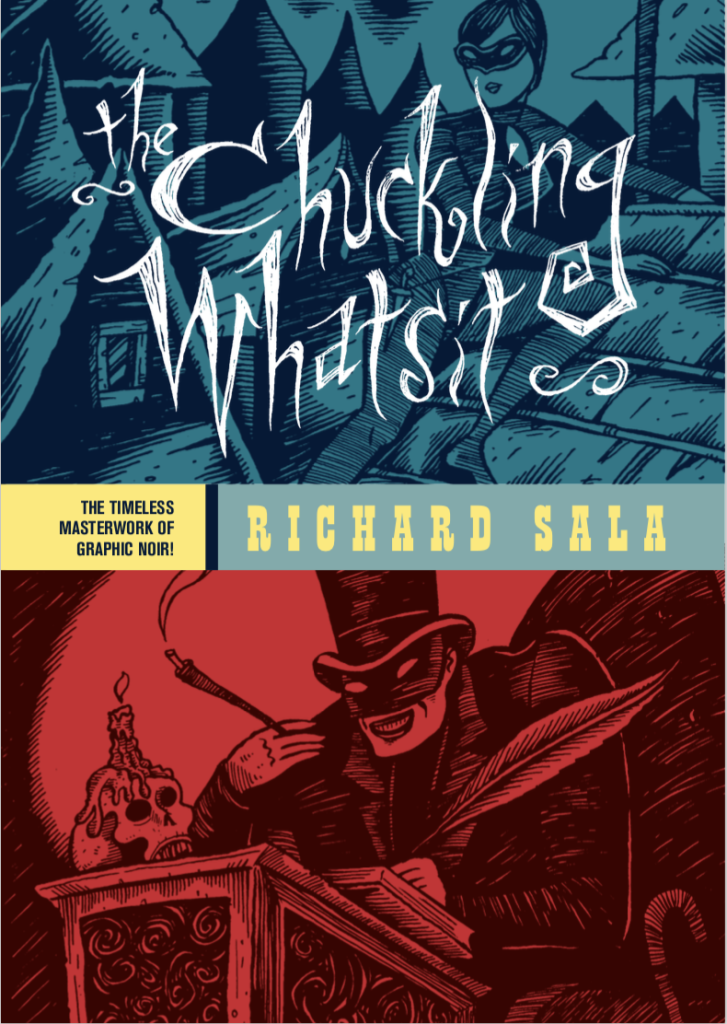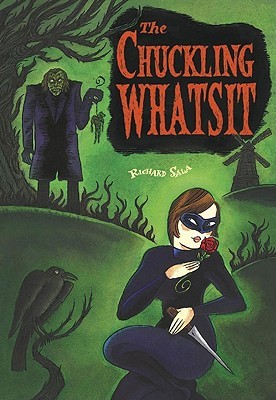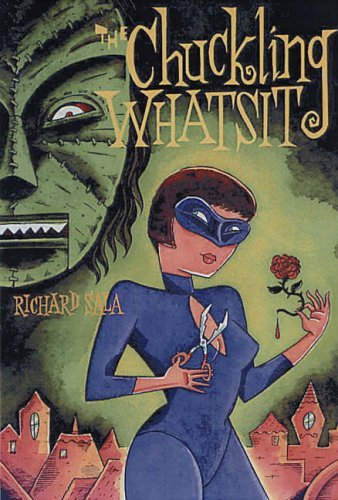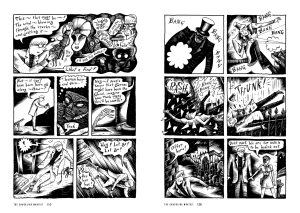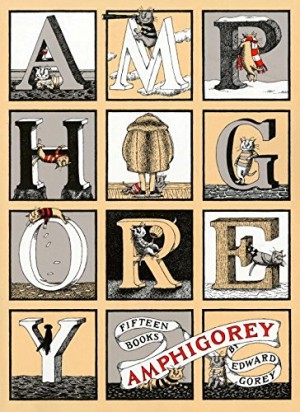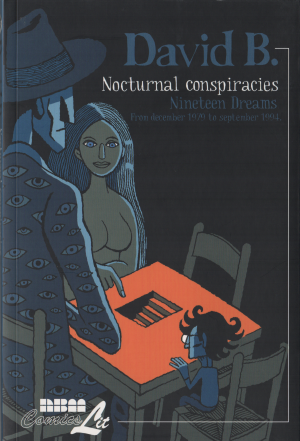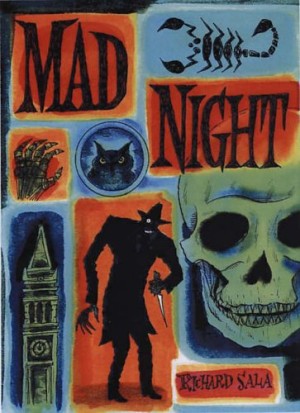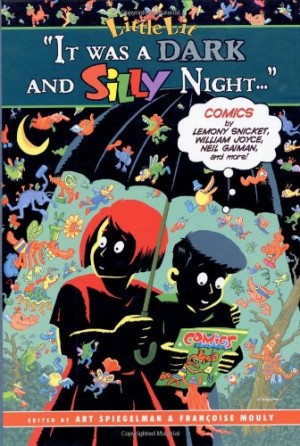Review by Graham Johnstone
Richard Sala made his name with a series of intense gothic shorts channelling the spirit of Edward Gorey and Charles (Addams Family) Addams. Sala wove the same obsessions into a noir murder mystery for his book length debut, The Chuckling Whatsit. Its serial origins are evident, notably in the recaps subtly woven into each chapter. Long out of print, in 2023 Fantagraphics released a new hardback edition, designed by Sala’s longtime friend Daniel Clowes.
The Chuckling Whatsit is a crude and creepy effigy created by eccentric, and apparently dead, artist Emile Jarnac. It’s the main MacGuffin driving this comically intricate epic noir. Sala revels in the paraphernalia of fiction, yet typically subverts narrative expectations, here with a half-hearted protagonist facing an ever-expanding cast of informant/suspects.
Reluctant protagonist Broom is a hack journalist. Previously fired from “not the biggest paper in town”, the sudden death of astrology columnist Venus, gives him another chance. Trawling through his predecessor’s papers, Broom discovers a serial killer is targeting astrologers, but why would he worry? He doesn’t see his future in astrology.
Sala has fun creating colourful characters and contrived clues. Broom helps the Safari-suited Abigail Aberdevine search for Jarnac, and they discover that Venus was once a serious journalist, and researching an exposé of the aforementioned artist. Meanwhile, Septimus Crisp and his manservant Mandrill are searching for the Whatsit, believing it an ancient evil relic. Then there’s GASH, ostensibly Ghoul Appreciation Society Headquarters, but rumoured to actually be the Global Association for Sabotage and Homicide. Is Broom, and the parade of oddballs volunteering clues, being played by Mr Ixnay and his eye-patched associate, Mia Moray? Readers heads may spin trying to keep track, but that’s all part of Sala’s mischievous fun. It’s best just to enjoy the ride.
Pulp fiction tropes are gleefully plundered, like the dim-but-loyal henchman, and multiple femme fatales, but Sala wrangles it all together with brilliant invention, and winning charm, managing to be both gruesome and glorious, horrific and hilarious, with fantastically fiendish reveals. It’s packed with ironic humour, yet it’s increasingly gripping, and whenever Sala/Broom seems to have pulled all the plot threads together, there’s another twist.
Visually, too, this is some of Sala’s best work. His background is fine art, and he favours artistry over illusion. Every panel is beautifully composed and rendered in ink lines that convey form, tone and weight, while asserting their identity as lines drawn on paper. Sala ransacks the costume cabinet for domino masks, eye patches, stove-pipe hats, and, er, Girl Scout uniforms, while his characters’ exaggerated physiognomies recall Chester Gould’s Dick Tracy. The panels are packed with paraphernalia of this Neo Grimm Brothers world, and each character’s little corner of it, and everything seems to writhe with arcane energy. Further visual treats include pseudo-astrological motifs introducing chapters, and (acknowledging the Dick Tracy influence), a gorgeously rendered Rogues’ Gallery.
Typically of Sala’s comics, The Chuckling Whatsit is both entertaining fiction, and artful metafiction mischievously mocking its own methods. The greatest joke of all, though, is in the premise: astrologers who can’t even anticipate their own murders. Sala, who died before the new edition reached print, deserves to survive somewhere, in a remote tower or cobwebbed library, marvelling at his mischief… and chuckling.
